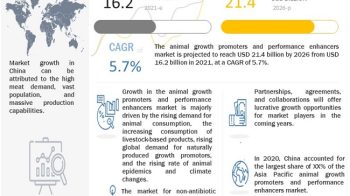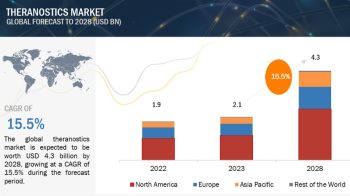“Mice Model Market – By Type (Inbred, Knockout, Hybrid), Technology (Microinjection, Embryonic stem cell), Disease (Oncology, Diabetes), Service (Breeding, Quarantine, Genetic testing) & Care Products (Bedding, Feed) – Analysis & Global Forecast to 2020”
Mice models are indispensable tools in research activities with their capability to elucidate human disease processes, due to striking similarities between the anatomy, physiology, and genetics of humans and mice. These advantages promote scientific discovery, understanding of the functions of individual genes, mechanisms of different diseases, and the effectiveness and toxicities of various drug molecules. Mice models are the most popularly used animal models due to their small size, short generation time, accelerated lifespan, low cost, and requirement of less space. These factors help in accelerating the research and development of drug therapies. By type, the mice model market is categorized into inbred mice, genetically modified mice (knockout, knock-in), conditioned/surgically modified mice, hybrid/congenic mice, outbred mice, and spontaneous mutant mice.
Growth in the mice model market is likely to be centered in the Asia-Pacific region. Growth in the Asia-Pacific can be attributed to the less stringent regulations on the use of animal models for research in Asia as compared to Europe and the U.S., international alliances for R&D activities in China, growth in regenerative medicine, biomedical, and medical research in Japan, growing presence of global players, development of bioclusters to boost biotechnology industry in India, ongoing biomedical research activities in Australia, and rising pharmaceutical and biotechnology R&D activities in Korea.
The significance of China’s R&D capabilities has become increasingly important as an emerging force in the globalization of pharmaceutical R&D, thus fuelling the use of mice models. Cost savings and the lack of regulations have been one of the most important drivers to outsource preclinical activities in China. Sponsors could save about 30%-35% on the preclinical trial of a drug under investigation. The Chinese market is witnessing a growing influx of various pharmaceutical companies and mice model suppliers. For instance, in March 2015, Eli Lilly and Company (U.S.) and Innovent Biologics, Inc. (China) announced one of the largest biotech drug development collaborations in China. According to the agreement, Innovent will be involved in the development and manufacturing of at least three oncology drugs, while Eli Lilly will be responsible for their commercialization. Moreover, the Chinese government has made it mandatory for all pharmaceutical and cosmetic products to be animal-tested before they are sold in the market. The need to test cosmetic and pharmaceutical compounds through mice is likely to bolster the demand for mice models in China.
Japan has been a leading market in the life sciences industry; various government and research institutes in Japan are also contributing to the growth in biomedical research. The Japan Society for the Promotion of Science and the Tokyo Biochemical Research Institute are among the prominent institutes that provide grants for biomedical research. Japan currently has a number of different organizations that conduct biomedical research, including the National Hospital Organization (NHO), National Institute of Radiological Science (NIRS) and National Institute of Biomedical Innovation (NIBIO). Moreover, Japan has also partnered with countries like Russia, India, the U.K., and others to jointly undertake biomedical research which is boosting the demand for research activities and the usage of mice models. In addition to this, the rising investments in the field of regenerative medicine In Japan also favor the growth of mice model market.
Development of bioclusters, growing presence of global players, and the rising R&D activities by pharmaceutical companies in the Indian market has encouraged the research activities thereby driving the market. In addition to this, Australia has been actively conducting biomedical research projects over the years. These projects make extensive use of animal models for the discovery, development, and commercialization of antibody-based medicines, thereby being a growth factor for the mice model market. Similarly, the heavy investments in translational and biomedical research that involves preclinical tasks encompassing animal testing has resulted in the growth of the market for mice models in Singapore.

